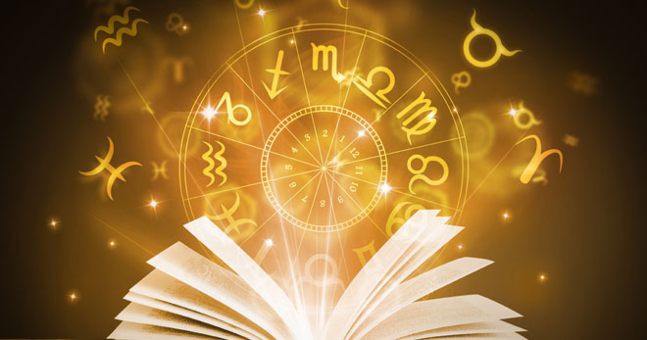What Is Nakshatra Constellation

August 16, 2022 | astrology
Have you ever gazed up at the night sky, wondering about the celestial bodies that adorn it? In the realm of astrology, Nakshatras, or lunar constellations, hold a significant place. These clusters of stars have fascinated humans for centuries, each carrying its own unique symbolism and energy. In this informative guide, we delve deep into the essence of Nakshatra constellations, exploring their meanings, impact on astrology, and the insights provided by the Best Astrologers in Delhi.
Nakshatra Constellations: Illuminating the Skies
Nakshatras, often referred to as lunar mansions, are 27 distinct sections along the ecliptic, each associated with a group of stars. These constellations have a profound influence on Vedic astrology, contributing to the interpretation of an individual's birth chart. Nakshatras go beyond the boundaries of conventional zodiac signs, adding layers of complexity to astrological readings.
Unveiling the Essence: Nakshatra Meanings
Every Nakshatra carries a unique symbolism and energy that shapes an individual's traits, behaviors, and life events. From Ashwini to Revati, each lunar mansion embodies specific qualities and attributes. For instance, Ashwini, the first Nakshatra, is associated with swiftness, healing, and initiation. On the other hand, Revati signifies nourishment, compassion, and the end of a journey. Understanding these meanings can provide profound insights into one's life path.
Influence on Astrology: Nakshatras vs. Zodiac Signs
While zodiac signs offer a general overview of personality traits, Nakshatras dive deeper into an individual's character and destiny. Unlike zodiac signs that change every month, Nakshatras change every day, adding an extra layer of specificity to astrological readings. Astrologers in Delhi utilize Nakshatras to provide more accurate and personalized guidance, enhancing the quality of insights for their clients.
Best Astrologer Reviews: Expert Opinions on Nakshatra Constellations
When seeking guidance on Nakshatra constellations, it's imperative to consult the best astrologers in the field. In Delhi, renowned astrologers have garnered rave reviews for their profound knowledge and accurate predictions related to Nakshatras. Clients have reported life-altering experiences, where the wisdom of Nakshatra constellations has provided clarity, guidance, and a deeper understanding of their life's journey.
The Unparalleled Significance: Nakshatras in Vedic Astrology
In Vedic astrology, Nakshatras hold an unparalleled significance. They are not just clusters of stars but cosmic markers that outline the path of an individual's destiny. Astrologers in Delhi tap into this cosmic energy to decipher life events, relationships, career trajectories, and more. By combining Nakshatra insights with planetary positions, astrologers offer holistic and accurate readings.
Nakshatra Meditation: Harnessing Celestial Energy
Beyond predictive astrology, Nakshatras offer a gateway to spiritual growth. Meditation on specific Nakshatras can align individuals with their cosmic essence, helping them tap into the energies that resonate with their life's purpose. Astrologers in Delhi often guide their clients through Nakshatra meditation, allowing them to connect with their inner selves and navigate life's challenges with clarity and grace.
Conclusion
Amidst the expansive fabric of the universe, Nakshatra constellations radiate as luminous guides, offering celestial wisdom and enlightenment. Their influence on Vedic astrology is undeniable, enriching astrological readings with layers of depth and specificity. The best astrologers in Delhi have harnessed the power of Nakshatras to provide life-altering guidance, empowering individuals to navigate their paths with clarity and purpose. As you gaze at the night sky, remember that these constellations hold not only the secrets of the universe but also the keys to unlocking your true potential.
Frequently Asked Questions (FAQs)
Q: What Are Nakshatra Constellations?
Nakshatra constellations are 27 segments along the ecliptic, each associated with specific stars and meanings. They hold a prominent place in Vedic astrology, offering insights into an individual's personality, life events, and destiny.
Q: How Do Nakshatras Differ from Zodiac Signs?
While zodiac signs provide general personality traits, Nakshatras offer more precise and detailed insights. Nakshatras change daily, providing a deeper layer of specificity to astrological readings compared to the monthly changes of zodiac signs.
Q: How Can Consulting the Best Astrologers in Delhi Benefit Me?
Consulting the best astrologers in Delhi for Nakshatra insights can provide you with accurate and personalized guidance. These experts have received rave reviews for their ability to decipher the cosmic significance of Nakshatras and offer life-changing insights.
Q: Can Nakshatras Help in Spiritual Growth?
Yes, Nakshatras have a spiritual dimension as well. Meditating on specific Nakshatras can help individuals align with cosmic energies and discover their life's purpose. Astrologers in Delhi often guide their clients through Nakshatra meditation for spiritual and personal development.
Q: Are Nakshatra Readings Relevant to Modern Life?
Absolutely, Nakshatra readings hold relevance in modern life. As individuals seek deeper meaning and guidance, the insights provided by Nakshatras can offer clarity, direction, and a profound understanding of life's journey.
Q: How Often Do Nakshatras Change?
Nakshatras change daily, moving approximately 13.2 degrees per day. This dynamic nature adds a layer of specificity to astrological readings, making them more detailed and accurate.
